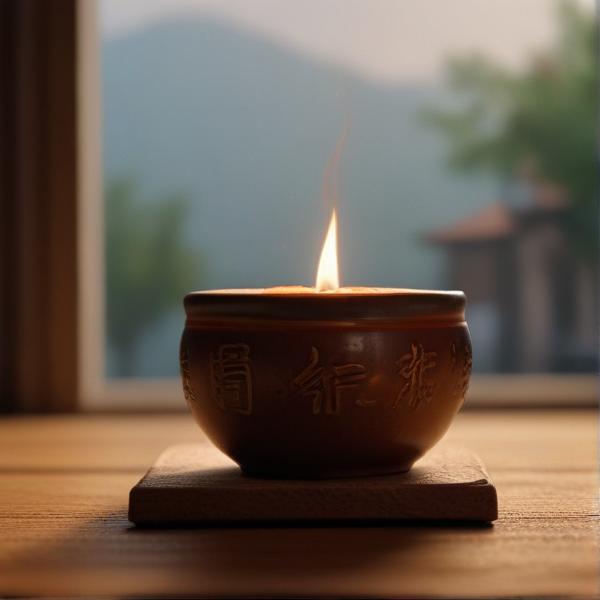基本信息 (Basic Information)
含义与用法 (Meanings & Usage)
中文核心释义 (Core Chinese Meaning): 用黏土烧制的覆盖屋顶用的建筑材料,亦指单位“瓦特”。
英文核心释义 (Core English Meaning): tile (roof tile made of baked clay), also the unit 'watt' in physics.
象形意义 / 为何这么写 (Pictographic Meaning / Writing Rationale)
文言文释义 (Classical Chinese Meaning)
深入学习 (In-depth Study)
字源故事 (Origin Story)
字形演变 (Character Evolution)
常用词语和例句 (Common Words & Examples)
瓦片 (roof tile)
屋顶上的瓦片排列得很整齐。
Eng: The roof tiles on the rooftop are arranged very neatly.
瓦特 (watt (unit of power))
这个灯泡的功率是60瓦特。
Eng: The power of this light bulb is 60 watts.
瓦房 (house with a tiled roof)
村里有很多老式的瓦房。
Eng: There are many old-style houses with tiled roofs in the village.
相关成语 (Related Idioms)
相关成语信息待补充。Related idiom information pending.
多语言翻译 (核心释义) (Translations (Core Meaning))
- French: tuile; watt
- German: Dachziegel; Watt
- Spanish: teja; vatio
- Italian: tegola; watt
- Portuguese: telha; watt
- Russian: черепица; ватт
- Arabic: قرميدة؛ واط
- Persian: کاشی سقفی؛ وات
- Dutch: dakpan; watt
- Polish: dachówka; wat
- Vietnamese: ngói; oát
- Ukrainian: черепиця; ват
视频学习资源 (Video Learning Resources)
通过以下链接在热门视频网站搜索 "瓦" 的更多讲解:
Search for more explanations of "瓦" on popular video sites:
- 在 Bilibili.com 搜索 "瓦 字源 说文解字" (Search on Bilibili)
- 在 YouTube.com 搜索 "瓦 character origin etymology" (Search on YouTube)
网络参考 (Web References for "瓦") ()
网络内容摘要 (Web Content Summary):
“瓦”的核心含义为烧制的泥器,尤其指用来覆盖屋顶的陶土板(如屋瓦)。 “瓦” primarily means a fired clay object, especially a tile used to cover roofs.
字形起源上,“瓦”是象形字,最早的字形像一个经过烧制、用作容器或屋顶板的泥器。《说文解字》解释其为“土器已烧之总名”,即所有烧制的泥土器具。很多与陶器或建筑相关的字都会以“瓦”为偏旁。 The character is pictographic, originally resembling a fired clay vessel or tile. According to ancient dictionaries, it referred broadly to all kinds of fired earthenware. Many characters related to pottery or construction use “瓦” as a component.
- 常见用法、词语: 瓦片(tile),瓦房(tiled house),瓦块(tile piece)。 Common usages/words: 瓦片 (tile), 瓦房 (house with tiled roof), 瓦块 (tile piece).
- 易混淆点: “瓦”在现代科技中也作“瓦特”的简称(如电力单位),但原义为陶器屋顶砖。 Potential confusion: In modern contexts, “瓦” is also an abbreviation for “watt” (power unit), but its original meaning relates to roof tiles.
文化趣味: 屋瓦在中国古代有重要建筑意义,经常用于形容房舍、市井生活。 Cultural note: Roof tiles (“瓦”) were essential in ancient Chinese architecture and often symbolize homely life in literature.
成语: 不常见,但“瓦片”、“瓦舍”等词在文学中较多。 Idioms: Not many idioms, but “瓦片” and “瓦舍” are used in literature.
汉字"瓦"的起源、演变过程-汉字字源辞典
汉字字源辞典收录13864条汉字词条,基本涵盖了常见汉字的字源解析,是汉字研究的必备工具。
【瓦】的甲骨文金文篆文字形演变含义 - 甲骨文研究网 甲骨文密码字典 在线甲骨文字典研究 - 甲骨文研究网 甲骨文密码字典 在线甲骨文字典研究 认路
附 文言版《説文解字》:瓦,土器已燒之總名。象形。凡瓦之屬皆从瓦。 附 白话版《说文解字》:瓦,经过烧制的泥料器皿的总称。字形像泥料器皿的形状。所有与瓦相关的字,都采用"瓦"作边旁。 文言文名句摘抄 ①名词:可凹凸相扣、遮盖屋顶的烧制泥板。
更多图片 (瓦 More Images) ()
